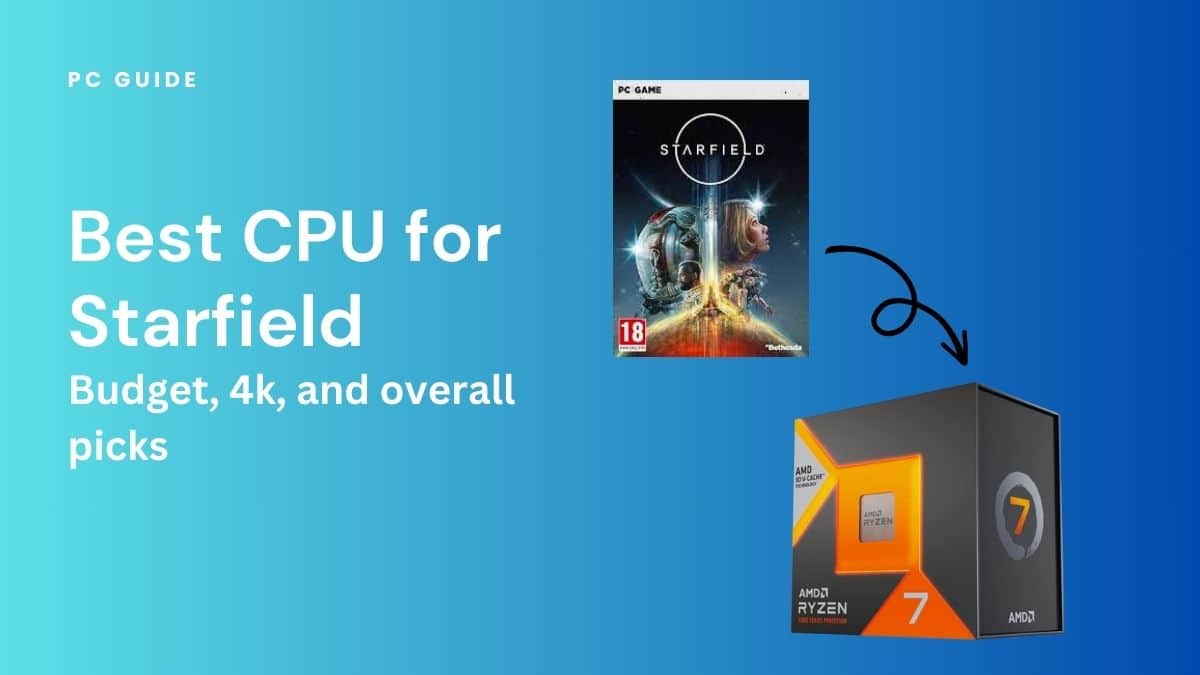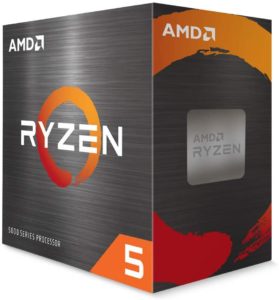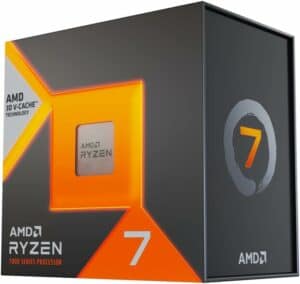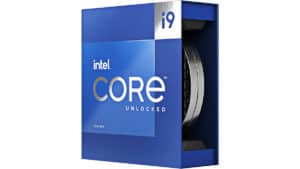Products at a Glance
How do we pick the best CPU for Starfield?
Our selection process involves in-depth research and an understanding of the capabilities of available CPUs on the market (and their suitability for Starfield’s recommended specifications). This enables us to assess how these processors cope with the game’s high computational demands. Given that we know Starfield’s minimum recommended CPU is the AMD Ryzen 5 3600X, an excellent mainstream CPU, we used this as a base level for our own processing recommendations. On the whole, it looks like Starfield is a bit CPU-intensive. That’s not to say that the framerates are going to be very unstable, but get yourself prepared for some potential bottlenecks and challenges.
We also factor in user reviews and expert opinions to ensure that our recommendations are robust and practical. A CPU may have issues like overheating or high power consumption in real-world use. Ultimately, when choosing our best CPU for Starfield, we made sure to cover picks for those on a budget, as well as those wanting to play at 4k.
If you’re looking for a more general CPU upgrade for gaming, why not check out our guide to the best CPU for gaming in 2023, as well as the best Ryzen CPU in 2023.
Product Reviews
- Excellent gaming performance
- Cost-effective
- Broad motherboard compatibility
- Not the best for heavy multitasking
- Limited overclocking headroom
- Requires aftermarket cooler
The AMD Ryzen 5 5600X is a 6-core, 12-thread powerhouse that brings a tremendous amount of performance to the mid-range category. With a base clock speed of 3.7GHz and a boost clock reaching up to 4.6GHz, this chip doesn’t slack off. It’s built on AMD’s 7nm Zen 3 architecture, ensuring efficiency and performance are at their peak.
If you’re a gamer who doesn’t need a dozen cores but still wants top-tier gaming performance, the 5600X should be right up your alley. While it won’t set world records for content creation, for Starfield and most modern titles, it’s a beast. The cost-to-performance ratio is hard to beat, making it an excellent choice for most gamers. Throw in its compatibility with a wide range of motherboards, and you’re looking at a versatile piece of silicon.
For anyone who’s looking for a CPU that’s kind to your wallet but mean to your in-game enemies, this might be your perfect match. Furthermore, given that AMD is the exclusive partner of Starfield, this CPU is optimized to enhance Starfield’s performance.
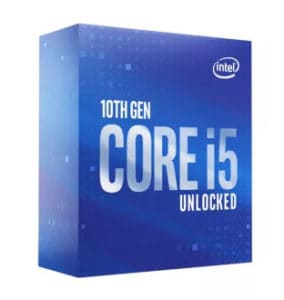
Intel Core i5-10600K
- Excellent value for money
- Solid multi-threading performance
- Versatile for both gaming and content creation
- Older 14nm process
- Can run a bit hot
- Lacks some high-end features
The Intel i5-10600K is like that dependable friend who might not be the star of the show but never lets you down. Built on a 14nm process, this six-core, twelve-thread chip can boost up to 4.8 GHz, ensuring you get snappy performance across the board. Its reliability is what makes it one of our choices of the best processors from Intel in 2023.
For gamers on a budget who still want to dive into the world of Starfield without breaking the bank, this CPU is a prime pick. Sure, it might not be the flashiest or the most powerful, but paired with a decent GPU, you’re in for a smooth Starfield experience. It’s also a great choice for those who dabble in a bit of content creation on the side.
Of course, as a budget-friendly option, there are a few compromises. The thermals can get a tad warm, and you might miss out on some of the latest bells and whistles offered by its pricier counterparts. But for its price point? It’s a star in its own right.
- Top-tier gaming performance
- Massive L3 cache
- Integrated Radeon Graphics
- Premium pricing
- Overkill for casual gamers
- Requires newer AM5 socket
Let’s talk about Ryzen 7 7800X3D – AMD’s crowning jewel in the gaming domain. This CPU is not just about the numbers; it’s about the innovation. Built on a 5nm process technology, it has 8 cores that clock up to a fantastic 5 GHz. And it doesn’t stop there; it also offers 8 MB of L2 and a whopping 96 MB of L3 cache, ensuring a blazing fast data retrieval rate.
This is on top of its groundbreaking 3D V-Cache tech which propels its gaming prowess to top-tier levels. The inclusion of AMD Radeon Graphics means you’re not just getting a beast of a CPU, but also some integrated graphics action.
Now, for Starfield enthusiasts wanting to immerse themselves in 4K gaming, the 7800X3D is nothing short of a blessing. It ensures the game runs smoothly, capturing every intricate detail Starfield has to offer. The octa-core design coupled with its impressive clock speeds means that not only will Starfield run at its peak, but multitasking becomes a breeze.
- Insane multi-core performance
- High boost clocks
- Future-proofed for intensive tasks
- Pricey
- Higher TDP at boost
Dive deep into the heart of Intel’s lineup, and you’ll find the Core i9-13900K—a beast of a processor, boasting a whopping 24 cores and 32 threads. This is the pinnacle of Intel’s CPU design, with a unique split between its P-cores (Performance cores) and E-cores (Efficiency cores). With P-cores reaching a turbo speed of 5.8 GHz and E-cores touching 4.3 GHz, this CPU has speed to spare. And with a 36MB cache, tasks are executed with finesse.
For the enthusiast who demands the absolute best, especially for a game as demanding as Starfield, the 13900K is a no-brainer. Those 24 cores? They’re going to ensure every particle, shadow, and AI routine in Starfield runs without a hitch.
However, premium performance does come with a premium price. And while the 13900K is a dream for many, it might be overkill for those just looking to game. But if you’ve got the budget and crave the best, there’s hardly a better choice out there for Starfield.
Features and Considerations
When selecting a CPU for Starfield, you’ll want to keep an eye on a few key specifications. Firstly, clock speed and core count matter. Starfield is expected to be an intensely demanding game that will make full use of multiple cores for various in-game mechanics. The more cores and the higher the clock speed, the better your game will run.
Another aspect to consider is future-proofing. A game like Starfield is just the tip of the iceberg when it comes to next-gen gaming. Investing in a CPU that not only meets but exceeds the current requirements for Starfield will ensure that your system is ready for future games that are equally or more demanding.
How many CPU cores will Starfield use?
The game requires a base CPU to have at least 6 physical cores. However, to truly immerse oneself in higher settings and resolutions, a CPU with 16 cores or more is recommended. This ensures smoother gameplay and allows the game to harness the full potential of its complex simulations and mechanics.
Is Starfield CPU or GPU intensive?
It’s mostly CPU-intensive. While a robust GPU will surely enhance visuals and effects, the game’s foundation relies heavily on CPU performance. Without a competent CPU, even the best GPUs will face bottlenecks, leading to less-than-optimal FPS.
Our Verdict
Final thoughts
With the release of Bethesda’s latest creation, Starfield, the gaming community is in for a treat. As we’ve explored, making the most of this game means ensuring your rig is up to the task. Starfield isn’t just another game; it’s an experience. Overall, our the top spot for best processor for Starfield goes to the AMD Ryzen 7 7800X3D.
Whether you’re looking for top-tier gaming perfection, are keen on 4K immersion, or are budget-bound but still eager for adventure, the CPUs we’ve highlighted cater to every kind of gamer. The underlying theme, however, remains consistent: to truly embrace Starfield’s vastness, your CPU should be nothing short of stellar.


